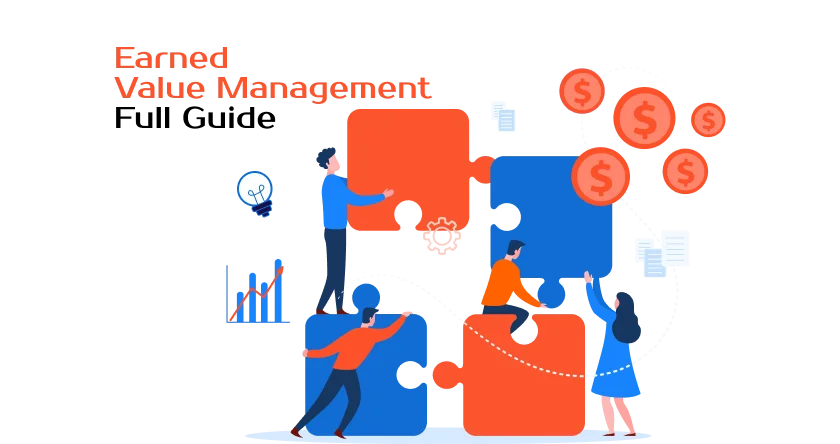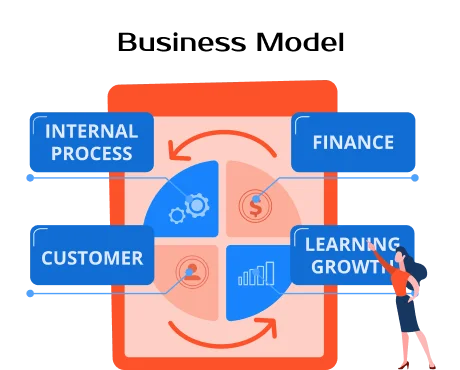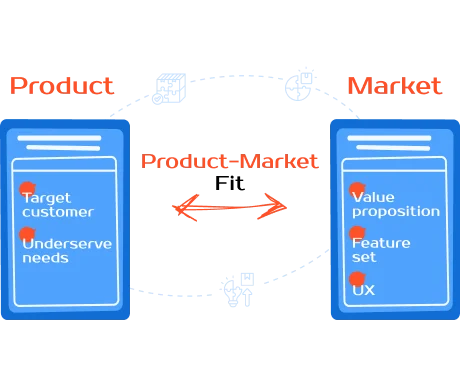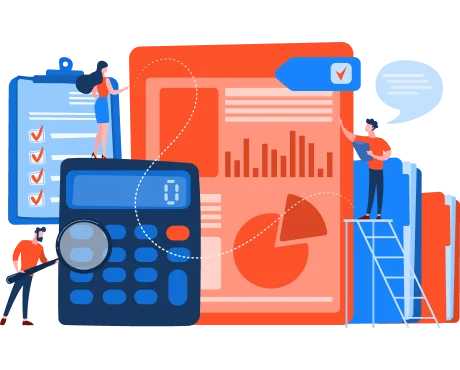Earned Value Management Full Guide
Published:
September 21, 2025

Earned Value Management (EVM) is a project management methodology used to measure project performance by comparing planned work, completed work and actual costs. It provides a clear, quantitative view of how a project is progressing in terms of time and budget.
Earned Value Management concepts is widely used in large-scale projects, especially in construction, IT and government contracting, as it helps identify risks early, control deviations and support data-driven decision-making.
The core concept of methodology is to integrate scope, schedule and cost into a unified framework for measuring project performance. It allows project managers to answer three fundamental questions at any point during the project:
- Are we on schedule?
- Are we within budget?
- Are we delivering the planned value?
By comparing planned progress (Planned Value), actual progress (Earned Value) and actual cost (Actual Cost), EVM reveals both current performance and trends, enabling early detection of delays or cost overruns. This proactive insight helps teams make informed adjustments before problems escalate.
Key Components of EVM
The key components of Earned Value Management (EVM) form the foundation for tracking project performance and forecasting outcomes. Each metric provides insight into cost, schedule and efficiency:
Step-by-Step Implementation Process
Understanding the key components of EVM provides the foundation for effective performance measurement, but knowing what to track is only part of the equation. To fully benefit from Earned Value Management, organizations must implement it through a structured and disciplined process. This ensures consistency, accuracy and actionable insights throughout the project lifecycle. The following step-by-step approach outlines how to apply EVM in practice, from planning and budgeting to performance tracking and forecasting.
- Define Project Scope and Work Breakdown Structure (WBS)
Break the entire project into manageable tasks using a clear WBS. This structure serves as the foundation for scheduling, budgeting and performance tracking. - Develop a Project Schedule
Create a detailed timeline that assigns start and end dates to each task. Use scheduling tools to map dependencies and allocate resources realistically. - Assign Budget to Each Work Package (Planned Value)
Estimate the cost for each task or deliverable, and distribute the total budget (BAC) across the WBS elements. This establishes the Planned Value (PV) for tracking progress. - Establish a Performance Measurement Baseline (PMB)
Combine the schedule and budget data into a time-phased baseline. This baseline serves as a reference for measuring performance throughout the project. - Track Actual Costs (AC)
Record real expenditures as work progresses. Ensure cost tracking is accurate and aligned with the WBS structure for consistent reporting. - Measure Earned Value (EV)
Determine the percentage of work completed for each task and multiply it by the task’s budget. This provides the Earned Value, reflecting actual progress in financial terms. - Calculate Variances and Performance Indices
Regularly compute: Schedule Variance (SV = EV − PV), Cost Variance (CV = EV − AC), Schedule Performance Index (SPI = EV ÷ PV), Cost Performance Index (CPI = EV ÷ AC). These indicators reveal schedule and budget health.
- Forecast Project Outcomes
Use performance indices to estimate: Estimate at Completion (EAC), Estimate to Complete (ETC), Variance at Completion (VAC = BAC − EAC). These forecasts help anticipate final project cost and performance.
- Report and Analyze Results
Generate regular EVM reports for stakeholders. Use charts and summaries to highlight trends, risks and corrective actions. - Adjust Plans as Needed
If performance metrics signal issues, revise schedules, reallocate resources or adjust scope. Maintain the baseline and document any approved changes for traceability.
Need help improving your business? Let’s talk
Common Problems With Earned Value Management
Observed methodology can be highly effective, but it comes with several common problems that may reduce its reliability or make it harder to use in certain environments.
One of the most frequent issues is the complexity of implementation. It requires detailed work breakdown structures, precise cost baselines, and consistent progress tracking. If the project lacks solid planning or if the initial data is incorrect, the entire system may produce misleading results.
Another common problem is the dependency on accurate and timely data. If project teams fail to regularly update cost and schedule information or if reporting is inconsistent, the EVM indicators lose their value. This can lead to incorrect assumptions about project performance.
EVM is also less effective for projects using flexible or iterative methodologies, such as Agile. These frameworks often focus on incremental delivery and value, which doesn’t align well with the fixed baselines required. As a result, applying traditional EVM in such projects may lead to confusion or inaccurate measurements.
In some cases, teams focus too much on metrics like cost and schedule performance indexes, without considering the quality of work or actual value delivered. This can create a false sense of control while key project outcomes are overlooked.
Great Earned Value Management Example
A construction company is building a small office facility. The total approved budget is $100,000 and the project duration is 5 months. After 2 months, the project manager wants to evaluate performance using EVM.
Planned Value (PV): After 2 months, 40% of the work was scheduled to be completed.
PV = 40% of $100,000 = $40,000
Earned Value (EV): Only 30% of the work has actually been completed so far.
EV = 30% of $100,000 = $30,000
Actual Cost (AC): The actual amount spent so far is $45,000
Now let’s calculate the EVM metrics:
Schedule Variance (SV):
SV = EV − PV = $30,000 − $40,000 = −$10,000
This means the project is behind schedule.
Cost Variance (CV):
CV = EV − AC = $30,000 − $45,000 = −$15,000
The project is over budget.
Schedule Performance Index (SPI):
SPI = EV ÷ PV = $30,000 ÷ $40,000 = 0.75
An SPI less than 1 indicates the project is progressing slower than planned.
Cost Performance Index (CPI):
CPI = EV ÷ AC = $30,000 ÷ $45,000 = 0.67
A CPI less than 1 shows that the project is costing more than expected.
Interpretation:
After 2 months, the project is both behind schedule and over budget. The project team has completed only 30% of the work while spending 45% of the total budget. This early warning allows the manager to investigate the causes and take corrective actions such as reallocating resources, improving efficiency, or adjusting the schedule.
Tools and Systems for EVM
To implement Earned Value Management (EVM) effectively, project managers often rely on specialized tools and systems that support planning, tracking, and reporting of cost, schedule, and performance data. These tools vary in complexity and are selected based on project size, industry, and organizational needs.
For small to medium-sized projects, spreadsheet software like Microsoft Excel or Google Sheets can be used to build custom EVM tracking templates. These allow basic calculations of metrics and are useful when budgets are tight or when full-scale project software is unnecessary.
Larger or more complex projects typically require dedicated project management platforms. Microsoft Project is a common choice, offering built-in EVM features, task scheduling, resource allocation, and integration with financial data. Similarly, Primavera P6 by Oracle is widely used in construction, engineering, and large infrastructure projects. It supports advanced scheduling, resource management, and EVM reporting.
Cloud-based solutions like Smartsheet, Monday.com, or Wrike offer EVM tracking within collaborative environments. These are useful for teams that need real-time access to data, shared dashboards, and integrations with other systems such as time tracking or finance tools.
In highly regulated industries, enterprise systems like Deltek Cobra or SAP Project System are preferred. They are designed to meet compliance requirements and provide detailed analytics, audit trails, and multi-project oversight.





